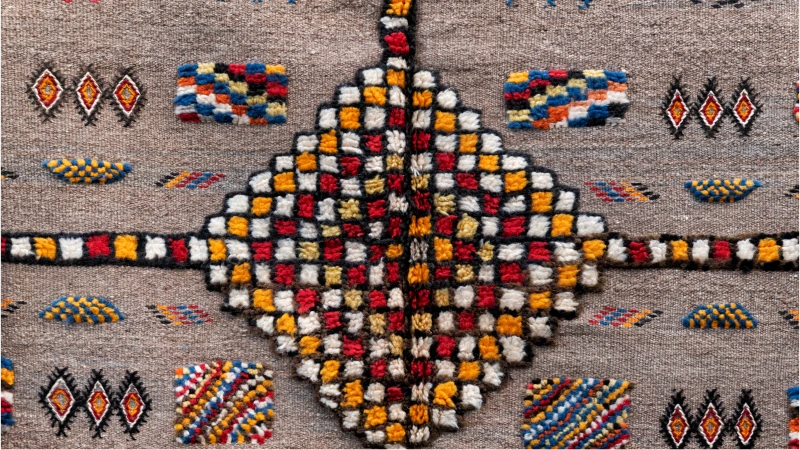Moroccan carpets, known for their intricate designs, vibrant colors, and rich cultural heritage, have a history that stretches back centuries. These rugs have evolved over time, reflecting the diverse influences, techniques, and artistry of the Moroccan people. From their ancient origins to their present-day significance, the story of Moroccan carpets is a fascinating journey.
Ancient Beginnings (800-1000 AD)
Moroccan carpet weaving has its roots in the Berber tribes of North Africa, who used traditional methods to create rugs for practical purposes. Early designs featured simple geometric patterns and earthy colors. These carpets were essential for providing warmth, comfort, and protection from the harsh desert climate.
Islamic Influences (11th-13th Century)
During the Islamic expansion in the Maghreb region, Moroccan carpets began to incorporate more complex patterns and motifs influenced by Islamic art. The use of Arabic calligraphy and intricate geometric designs became prominent. These designs often conveyed spiritual and cultural meanings.
European Interaction (17th-18th Century)
Moroccan carpets started to gain recognition in Europe during the 17th and 18th centuries. European travelers and explorers who visited Morocco were captivated by the unique and artistic designs of these carpets. Moroccan rugs began to be imported into Europe, where they found favor among the elite and aristocracy.
Colonial Era (19th-20th Century)
The colonial period brought significant changes to Moroccan carpet production. European carpet manufacturers influenced Moroccan designs, resulting in rugs that catered to the Western market’s tastes. During this time, the weaving industry also began using synthetic dyes, shifting away from traditional natural dyes.
Mid-20th Century and Modern Era
Moroccan carpets experienced a resurgence in popularity during the mid-20th century when mid-century modern designers incorporated them into their interior designs. The minimalist and abstract qualities of Moroccan rugs became highly sought after.
Present-day Moroccan carpets continue to reflect their rich heritage while adapting to contemporary trends. They are renowned for their diversity, with various regions in Morocco producing distinct styles of carpets, such as the Beni Ourain, Boucherouite, and Azilal rugs, each with its unique designs and color palettes.

Materials and Techniques
Traditionally, Moroccan carpets were made using natural materials such as wool, camel hair, and silk, and dyed using natural plant-based dyes. Today, the use of natural materials and dyes is experiencing a revival due to growing interest in sustainable and eco-friendly practices.
Moroccan rugs are predominantly handmade using the unique technique of hand-knotting or flat-weaving on vertical looms. This labor-intensive process requires skill and artistry, and it is often passed down through generations.
Cultural Significance
Moroccan carpets are deeply ingrained in the country’s culture and traditions. They are used as blankets, floor coverings, and even wall hangings. Moroccan rugs are considered not only practical but also artistic expressions of the weavers’ creativity and the cultural heritage of Morocco.
The intricate motifs and designs found in Moroccan carpets often carry spiritual or symbolic meanings. The use of specific patterns can reflect the weaver’s emotions, beliefs, and personal experiences. This unique form of storytelling through textiles is a testament to the deep cultural significance of these rugs.
Moroccan carpets continue to be sought after by collectors, interior designers, and enthusiasts worldwide. Their enduring popularity is a testament to the enduring artistry and cultural significance of these beautiful rugs, which have woven themselves into the rich tapestry of Moroccan history.




